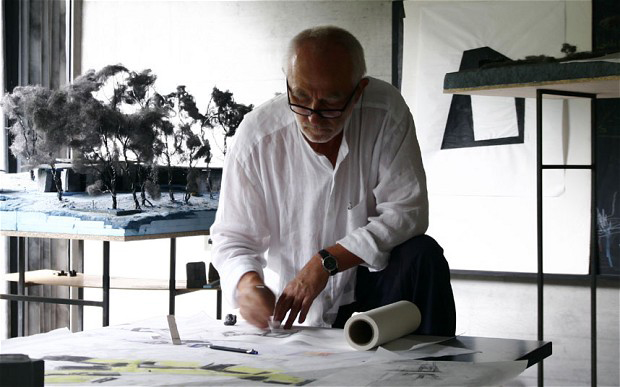29.06. - 25.08.13
http://www.hermitagemuseum.org
Что общего между Элем Лисицким и Ильей Кабаковым, и что они думают о космосе, мусоре и советском жилье.
Кураторы пригласили Илью и Эмилию Кабаковых не только в качестве художников, но и как кураторов, предложив им сделать выставку из собственных работ и работ известного конструктивиста и авангардиста Эля Лисицкого. Лисицкий и Кабаков как бы маркируют начало и конец советской эпохи и представляют два ее полюса — большие надежды, а затем глубокое разочарование. Выставка поделена на несколько тематических разделов, общих и для Кабакова, и для Лисицкого: космос и пустота, чистота форм и мусор, повседневность и прочие. Только вот акценты оказываются немного смещены. Если конструктивист предлагает нам взглянуть на новый мир и посмотреть в будущее, наш современник Кабаков говорит о несостоявшемся будущем и утопии.
http://www.hermitagemuseum.org
Что общего между Элем Лисицким и Ильей Кабаковым, и что они думают о космосе, мусоре и советском жилье.
Кураторы пригласили Илью и Эмилию Кабаковых не только в качестве художников, но и как кураторов, предложив им сделать выставку из собственных работ и работ известного конструктивиста и авангардиста Эля Лисицкого. Лисицкий и Кабаков как бы маркируют начало и конец советской эпохи и представляют два ее полюса — большие надежды, а затем глубокое разочарование. Выставка поделена на несколько тематических разделов, общих и для Кабакова, и для Лисицкого: космос и пустота, чистота форм и мусор, повседневность и прочие. Только вот акценты оказываются немного смещены. Если конструктивист предлагает нам взглянуть на новый мир и посмотреть в будущее, наш современник Кабаков говорит о несостоявшемся будущем и утопии.





















